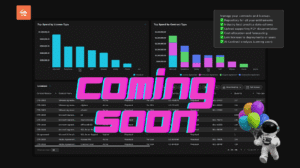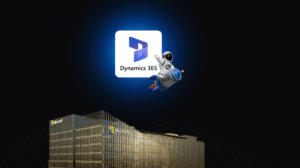Understanding the Benefits of Software Asset Management
About: Licenseware specializes in license analysis automation and development to get licensing insights, from any data source, in minutes. Find out more about delivering better services on our website ?

In today’s world, businesses rely on software to operate efficiently and effectively. From productivity tools to specialized software applications, every organization depends on technology to some degree. However, managing software assets can be a daunting task, especially in large enterprises with complex IT infrastructures. That’s where Software Asset Management (SAM) comes in. SAM is a proactive strategy that can help businesses understand and optimize their software usage while reducing risk and ensuring compliance. In this article, we explore SAM – what it is, why it matters, and what benefits it can bring to businesses of all sizes.
What is Software Asset Management (SAM)?
At its core, SAM is a process for managing and optimizing the purchase, deployment, maintenance, utilization, and disposal of software assets within an organization. SAM enables businesses to track the software they own, determine how and where it is used, and ensure compliance with licensing agreements and other legal requirements. Through SAM, organizations can gain visibility into their software inventory, avoid unnecessary expenses, and identify areas for improvement.
Key Components of SAM
Effective SAM requires a well-defined process that covers several key components, including:
- Inventory Management – identifying and tracking all software assets within an organization.
- Licensing – ensuring compliance with software license agreements and avoiding penalties and fines.
- Usage Optimization – optimizing software usage to minimize costs while maximizing benefits.
- Procurement – purchasing software in a way that minimizes cost and maximizes return on investment.
- Disposal – safely disposing of software assets that are no longer needed or useful.
The Importance of SAM in Modern Business
With the rise of cloud computing, mobile technology, and remote work, managing software assets has become more critical than ever before. SAM can help organizations address key challenges, such as:
- Reducing Costs – by avoiding unnecessary software purchases and optimizing usage.
- Ensuring Compliance – by adhering to software license agreements and minimizing the risk of security breaches.
- Enhancing Productivity – by enabling employees to focus on their core responsibilities rather than on software-related issues.
One of the most important components of SAM is inventory management. Without a clear understanding of the software assets that an organization owns, it can be difficult to make informed decisions about procurement, usage, and disposal. Inventory management involves identifying all software assets within an organization, tracking their usage, and ensuring that they are properly licensed and up-to-date.
Licensing is another critical component of SAM. Software licensing agreements can be complex and confusing, and failing to comply with them can result in significant penalties and fines. Effective SAM requires organizations to have a clear understanding of their licensing agreements and to ensure that they are in compliance with them at all times.
Usage optimization is also an important aspect of SAM. By optimizing software usage, organizations can minimize costs while maximizing benefits. This involves monitoring usage patterns and identifying areas where software can be used more efficiently or where alternative solutions may be more cost-effective.
Procurement is another key component of SAM. By purchasing software in a way that minimizes cost and maximizes return on investment, organizations can ensure that they are getting the most value from their software investments. This involves conducting thorough research, negotiating with vendors, and selecting software that meets the organization’s specific needs.
Finally, disposal is an important aspect of SAM. As software assets reach the end of their useful life, it is important to dispose of them in a way that is safe, secure, and environmentally responsible. This involves identifying software assets that are no longer needed or useful, removing them from the organization’s inventory, and ensuring that any sensitive data is properly disposed of.
In conclusion, SAM is a critical process for managing and optimizing software assets within an organization. By implementing effective SAM practices, organizations can gain visibility into their software inventory, avoid unnecessary expenses, and identify areas for improvement. With the rise of cloud computing, mobile technology, and remote work, effective SAM has become more important than ever before.
Benefits of Implementing Software Asset Management
Software Asset Management (SAM) is a process that enables businesses to manage and optimize their software assets throughout their lifecycle. SAM provides businesses with a comprehensive view of their software inventory, usage, and licensing, enabling them to make informed decisions about software-related investments. Implementing SAM can offer several benefits to businesses, including:
Cost Savings and Optimization
One of the primary benefits of SAM is cost savings. SAM can help organizations reduce software costs in several ways. By optimizing usage, businesses can avoid unnecessary purchases or renewals, resulting in significant savings. SAM can also help companies negotiate better prices for software licenses and reduce the risk of audits, fines, and other penalties.
Moreover, SAM can help businesses identify and eliminate redundant or underutilized software, freeing up resources for other critical business functions. By eliminating unnecessary software, businesses can reduce their licensing and maintenance costs and optimize their software investments.
Psst 💬
Need help in managing your Software Assets? Licenseware creates great SAM content, but even better SAM automations!
Get Software insights in minutes today using our apps ⏱️
Or book a call with one of our specialists 🤙🏻
Improved Security and Compliance
Another significant benefit of SAM is improved security and compliance. By ensuring compliance with software licensing agreements, SAM can help businesses avoid security breaches and associated risks. SAM can also help organizations maintain security by keeping software up-to-date, patching security vulnerabilities, and reducing the risk of malware and other threats.
Furthermore, SAM can help businesses track software usage and ensure that only authorized users have access to licensed software. This can help organizations prevent software piracy and reduce the risk of legal and financial penalties.
Streamlined IT Operations
With SAM, businesses can streamline IT operations, reducing the complexity and cost of managing software assets. By automating software-related tasks, SAM can help IT teams focus on critical business functions rather than on administrative tasks.
Additionally, SAM can help businesses standardize their software environments, reducing compatibility issues and enhancing productivity. By ensuring that all software is up-to-date and compatible with other applications, businesses can avoid downtime and improve their overall IT performance.
Enhanced Vendor Management
SAM can help businesses manage relationships with software vendors more effectively. By having a complete inventory of software assets and usage, businesses can negotiate better contracts, reduce the risk of overpaying for software, and build stronger partnerships with vendors.
Moreover, SAM can help businesses identify and eliminate vendor lock-in, enabling them to switch to alternative vendors if necessary. This can help organizations reduce their dependence on a single vendor and increase their bargaining power in negotiations.
Better Decision-Making and Planning
SAM can provide businesses with valuable data and insights on their software usage, costs, and performance. With this information, organizations can make more informed decisions about software purchases, upgrades, and renewals, resulting in a better return on investment.
Furthermore, SAM can help businesses plan for future software needs and budget accordingly. By having a clear understanding of their software inventory and usage, businesses can forecast their future software requirements and avoid unexpected expenses.
In conclusion, implementing SAM can offer several benefits to businesses, including cost savings, improved security and compliance, streamlined IT operations, enhanced vendor management, and better decision-making and planning. By adopting SAM, businesses can optimize their software investments and achieve a competitive advantage in their respective markets.
Steps to Implementing a Successful SAM Program
Software Asset Management (SAM) is a critical component of any organization’s IT strategy. By effectively managing software assets, organizations can reduce costs, improve security, and ensure compliance with licensing agreements and other legal requirements. The following are the steps to implementing a successful SAM program:
Assessing Your Current Software Environment
The first step in implementing a successful SAM program is to conduct a comprehensive assessment of your current software environment. This includes identifying all software assets, determining how and where they are used, and assessing compliance with licensing agreements and other legal requirements. By conducting this assessment, you can identify areas where your organization may be at risk and develop strategies to mitigate those risks.
During the assessment, it is important to consider the different types of software used in your organization, including commercial software, open-source software, and custom-built software. Each of these types of software presents unique challenges and requires different approaches to management.
Establishing a SAM Team
The next step is to establish a cross-functional SAM team composed of representatives from IT, legal, procurement, and finance. The SAM team will be responsible for developing and implementing the SAM program and ensuring compliance with established policies and procedures.
The SAM team should include individuals with expertise in software licensing, procurement, and usage optimization. It is also important to include representatives from different departments within the organization to ensure that the SAM program is aligned with the needs of the business.
Developing a SAM Strategy and Policy
Once the SAM team is in place, the next step is to develop a SAM strategy and policy that outlines how software assets will be managed within the organization. This includes defining roles and responsibilities, establishing procedures for inventory management, licensing, procurement, usage optimization, and disposal, and developing metrics for monitoring and measuring SAM effectiveness.
The SAM strategy and policy should be aligned with the organization’s overall IT strategy and business objectives. It should also be communicated clearly to all employees to ensure that everyone understands their role in the SAM program.
Implementing SAM Tools and Processes
The SAM team should select and implement SAM tools and processes that support the SAM strategy and policy. This may include software inventory tools, license management systems, usage optimization tools, and disposal procedures.
The SAM team should also establish processes for tracking software usage and ensuring compliance with licensing agreements. This may include regular audits of software usage and licensing agreements, as well as procedures for disposing of software that is no longer needed.
Monitoring and Continual Improvement
Finally, the SAM team should regularly monitor and evaluate the SAM program to ensure its effectiveness and identify areas for improvement. This includes analyzing software usage data, conducting regular audits, and soliciting feedback from stakeholders.
By continually monitoring and improving the SAM program, organizations can ensure that they are effectively managing their software assets and maximizing the value of their IT investments.
Conclusion
SAM is a critical component of modern business strategy that can help organizations reduce costs, ensure compliance, enhance productivity, and make better decisions. By implementing a comprehensive SAM program that covers key components such as inventory management, licensing, usage optimization, procurement, and disposal, businesses can optimize their software assets, minimize risk, and achieve significant ROI.
If you find our articles useful, register for our monthly newsletter for regular industry insights 👇









